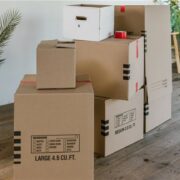Scientific breakthroughs bring a lot of help in medicine and its branches. Methods of keeping health manageable and curing some diseases were discovered in the last decade. In order to achieve these breakthroughs, the authorities in the fields of medicine need to study a lot about diseases and the human body. A part of this process is by taking tissue samples. Collecting tissue samples are important in processing DNA and in fields like histopathology, parasitology, immunohistochemistry, and biochemistry. These samples are often transported to labs for study, testing, storage, and retrieval later on. One of the biggest problems in transporting these bio-specimen is that some samples need to be stored at a certain temperature. Others need to be tightly monitored, especially if there are contaminants. There are businesses who offer transportation, identification, and storage of these bio-specimens. However, when the samples are growing in number, a new laboratory is needed in order to continue these businesses.
Moving tissue samples can be a pain in the neck if not done correctly. Preparation is a must for a successful lab relocation. Here are the things to do before and after lab relocation in order to ensure safety for the specimens as well as the safety of people in the operation.
THINGS TO DO BEFORE LABORATORY RELOCATION
- Make an inventory of the samples AND the equipment
This is an important part of moving biospecimen to other places. Make sure that an inventory is done in order to monitor the completeness of samples. This is also to make sure that the state of the samples was the same from the old to the new location.
- Assign personnel and notify them about the risks involved
Before moving, assign people who will be handling specific duties. In this stage, it is recommended to relay special measures and other related matters regarding the shipment.
- Organize the best date, best route, and best options and timeline of the move
Time is important when it comes to transporting samples. The shorter the time the samples will leave the laboratory, the lesser it is likely to be destroyed. In order to achieve the shortest time for moving, consideration for the best date, the best route, and the best time to move are necessary.
- Ensure that the new location is prepared even before the relocation and validate that everything is working
To reduce the time for samples to spend on alternate storage devices, everything must be ready in the new location. The equipment needed for storage is the one needed to be set in order to proceed to move in storage immediately.
- Ensure that there will be enough refrigerant and alternative storage for samples that require specific temperature conditions
This is important if the shipment will need to stay on the road for a long time. If there will be a shortage in the refrigerant, a lot of samples might die during the transit.
THINGS TO DO AFTER LABORATORY RELOCATION
- Check the inventory after the move in order to determine if something is missing or destroyed
Knowing the state of each sample after the move is an important part of post-move operations. If there are samples destroyed during the process, you can think of actions to follow in order to avoid hassle in the future operations.
- Decontaminate the vehicles that are used in moving
If there are leaks of dangerous materials or other things that might have contaminated the vehicles, it is better to take it off before leaving the facilities.
- Make sure that the trip was well documented
Documenting the trip and everything that happened, good or bad, will help with the future lab relocations. This is helpful for avoiding the same mistakes that happened in the previous relocations. Your firm will be able to prepare for future countermeasures to protect the samples and the operating personnel.
- Decontaminate the old location
This is an ethical part of the field. After you use infrastructure for a specific purpose, it is important to clean up and remove the equipment and other things before leaving the place. It ensures no harmful impacts on people around the area.
- Communicate that the move has been completed
This signifies that the move was completed successfully and nothing went wrong. Communicating with your clients to know that your operations are relocated is also important. It is the client’s right to know what happens to the samples.





